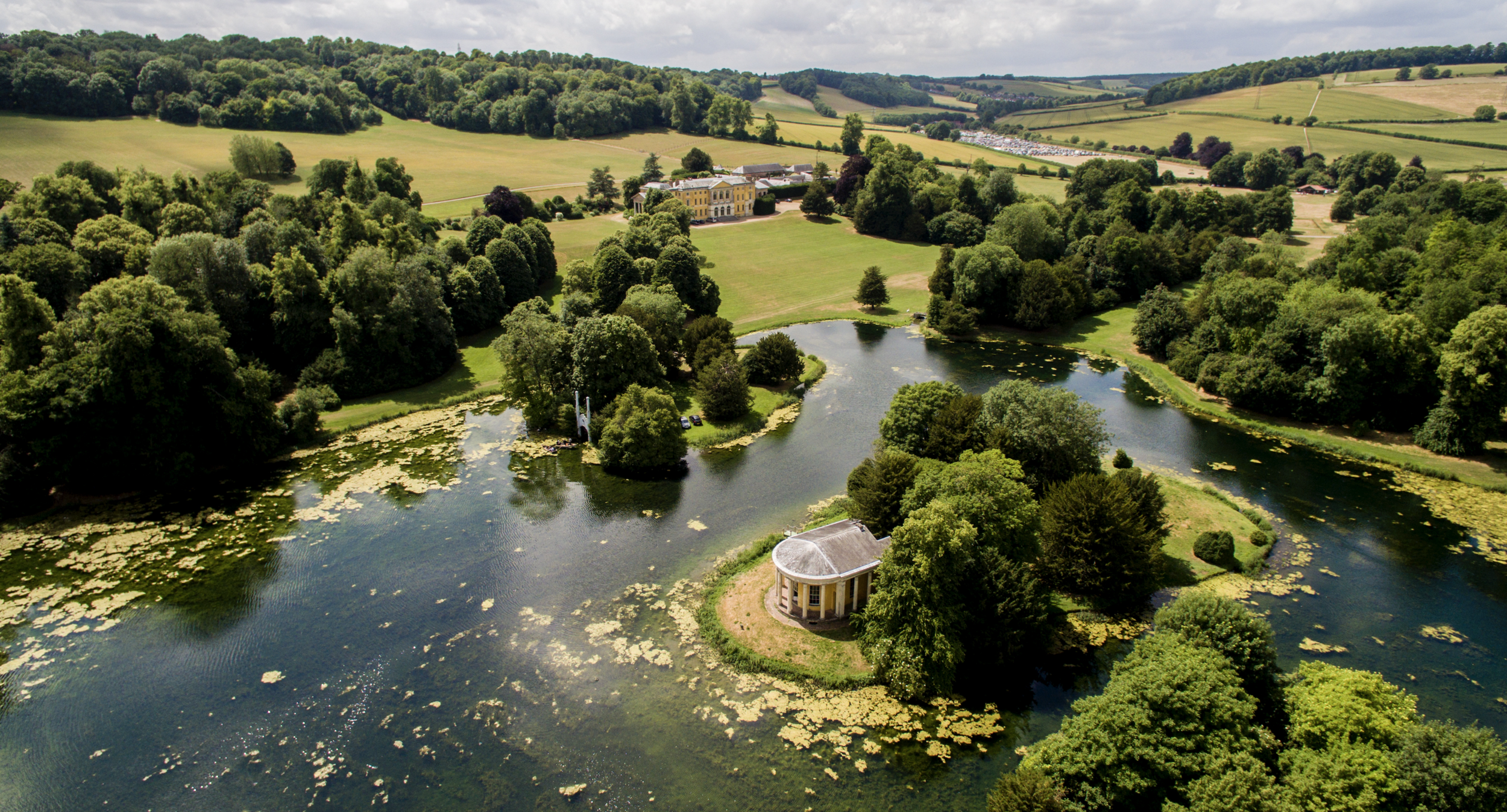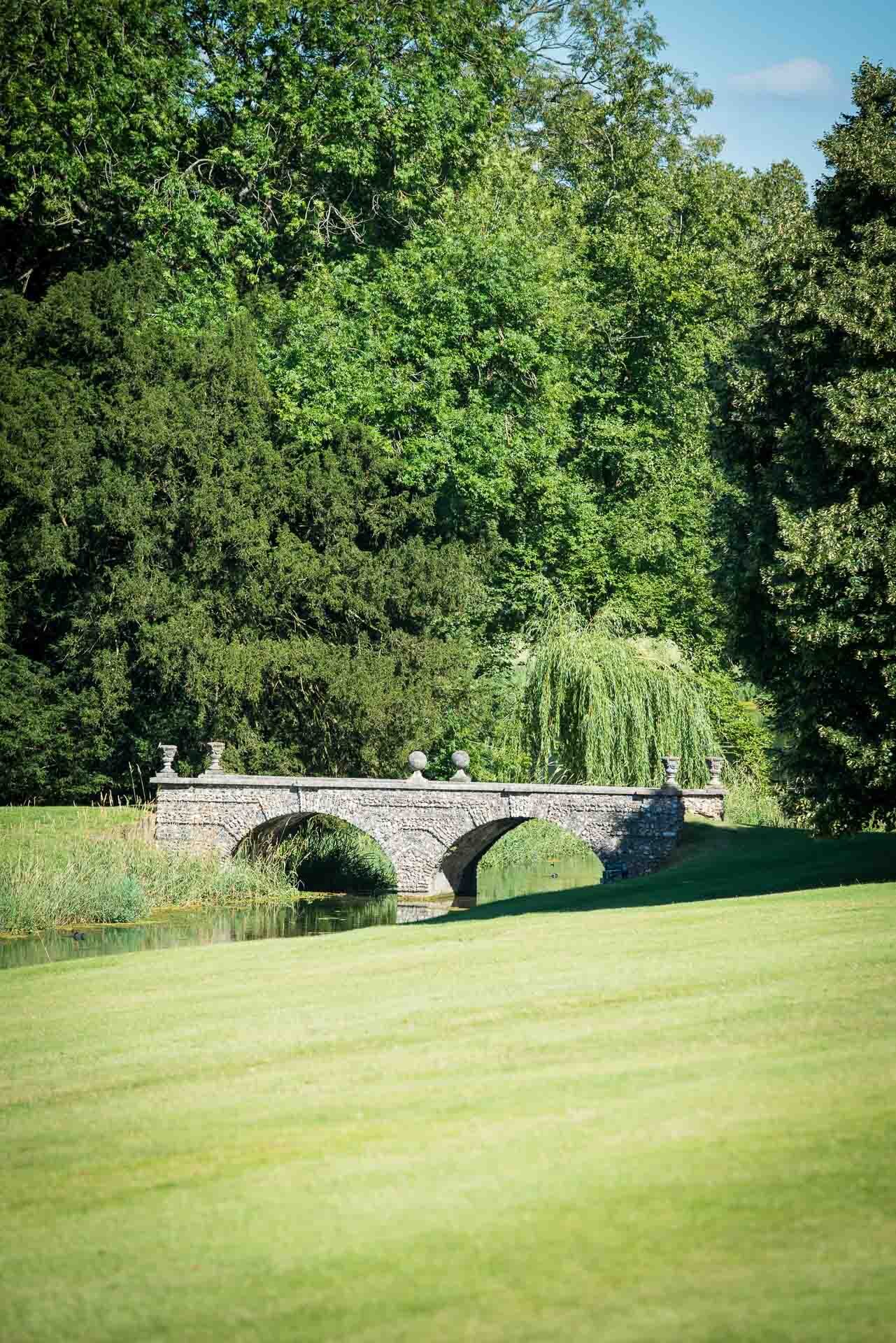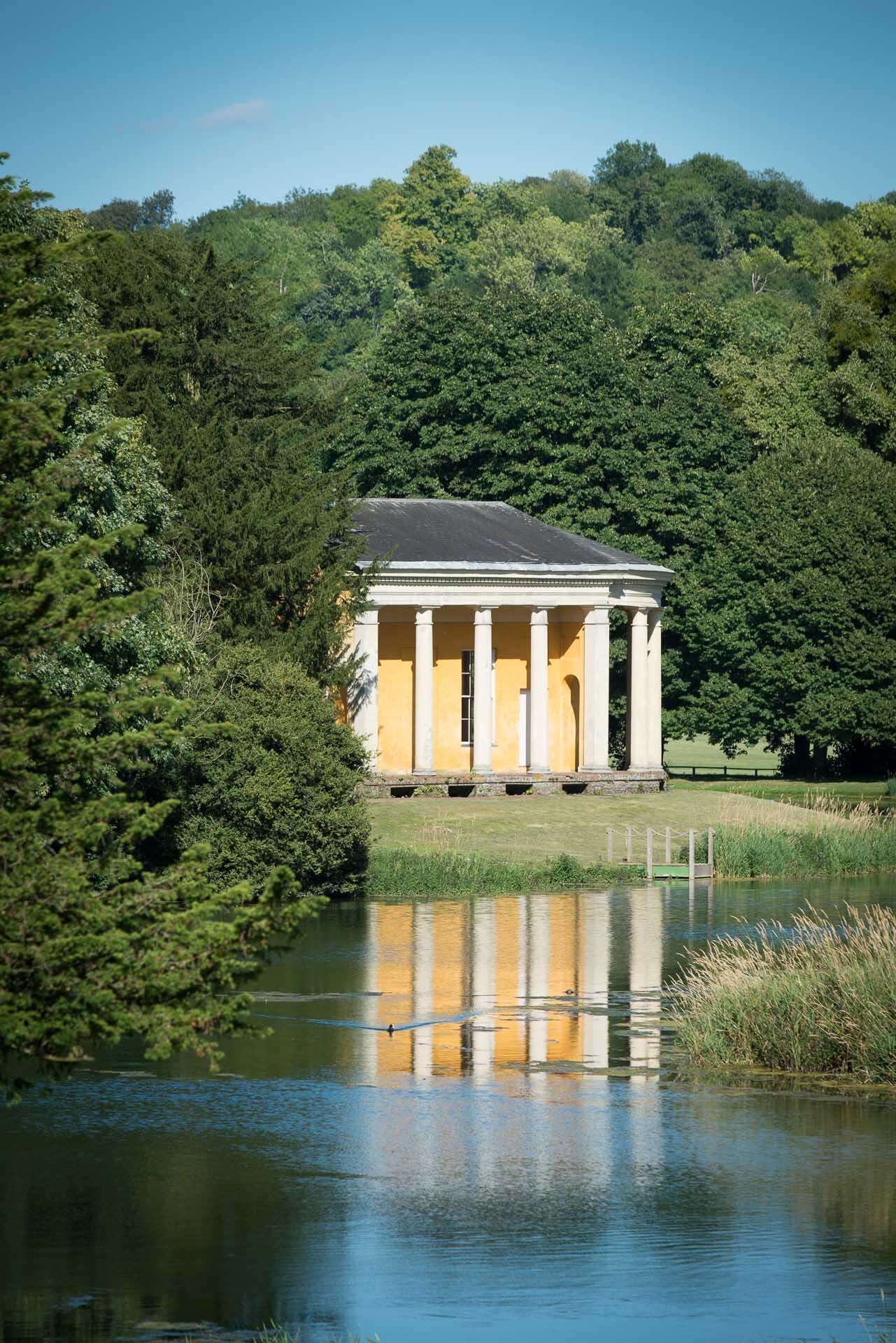
‘The Gardens are a paradise, ’ Benjamin Franklin
HISTORY
West Wycombe House and its 5000 acre estate is the home of the Dashwood family and has been since 1698. The first Sir Francis Dashwood built a house on the site, although barely any of this original house is visible, as it was incorporated into the extensive remodelling of the house undertaken by his son the second Sir Francis Dashwood.
The house is still substantially as this Sir Francis left it, drawing inspiration from his Grand Tour through Europe in his youth, he created an exquisite Palladian villa that with its porticoes and colonnades would be equally comfortable set in either Italy or Greece.
He built West Wycombe to entertain and throughout his life his antics provoked a great deal of speculation adding a great deal of colour to the Dashwood name. A founding member of the Society of Dilettanti, a club of wealthy and cultured gentlemen whose aim was to promote the knowledge and understanding of classical art and taste in England, Sir Francis had a reputation for enjoying himself in fact Horace Warpole was known to say that ‘the nominal qualification [for being in the society] is having been in Italy and the real one being drunk; the two chiefs are Lord Middlesex and Sir Francis Dashwood, who were seldom sober the whole time they were in Italy!’
Perhaps the most notorious of Sir Francis’ behaviours was that whilst at the Hellfire Club, where although it is very likely that the contemporary promiscuous rumours of the happenings within this club were widely exaggerated, free love and heavy drinking did most definitely take place there.
However, the legacy of Sir Francis that we have seen so far is rather too negative for a man who during his life took part in some extraordinary public works such as the excavation of the Hellfire Caves in order to provide materials for straightening the road from London to Oxford. Furthermore, he had a monument called the Dunstan Pillar or ‘lighthouse’ built in 1751 on his Lincolnshire estates to guide travellers across the wild Lincoln Heath. West Wycombe House and its contents represent an even brighter picture of this man and proves his warmth and feeling creating a wonderful atmosphere encapsulating his sense of fun. This sense of fun still lives on today, the late Sir Francis Dashwood, the 11th Baronet resurrected many of the festivities that the second Sir Francis had revelled in with many firework parties and concerts where he was also very partial to dressing up.
In fact the present state of this magnificent house and park is largely due to this Sir Francis who undertook a great deal of research from the moment he took over the house in 1963. Luckily for the eight or nine generations before him his predecessors had done very little to the house – there had been no Victorian wings installed and it still stands largely as the second Sir Francis left it. Sir Francis the 11th baronet managed to track down and buy back various original pieces of furniture and embarked on a huge plan of restoration that is still continuing today.
The recent Dashwoods have re-established the strong link between this house and the family that created it. Today, it is a family home that accurately reflects the history of its ancestors. As well as a home and visitor attraction, West Wycombe Park is still a wonderful venue in which to entertain on a lavish scale. It is an idyllic setting for weddings, wedding receptions, parties, film locations and corporate events. In the words of Benjamin Franklin: ‘the Gardens are a paradise.’

THE GROUNDS
The grounds at West Wycombe Park are among the finest and most unique 18th Century gardens surviving in England today. The park is a perfectly preserved rococo landscape garden, complete with statues, temples which are consistent in their use of Classical Architecture from both Greece and Italy. Main features of the grounds at West Wycombe are relics of the artificial Rocco style, offering an enticing mixture of water and solid ground which provide straight avenues, serpentine streams and winding paths in the woods.
The lake is entirely man made, created from the nearby River Wye in the form of a Swan. There are several springs within it that in turn fill it with its characteristic chalk filtered water, producing its gin clear appearance. The lake is host to an enormously diverse range of wild life including all manner of invertebrate and insects through to coots, swans and many ducks. The lake and the approachable parts of the river are well stocked with both brown and rainbow trout and may even be fished as part of a Corporate Day or outing through West Wycombe Corporate Entertainment.
At one stage in the park’s heyday an enormous galleon was brought over land from the Thames at Maidenhead and left floating on the water as an amusement for the guests of Dashwood’s guests, complete with a resident captain on board!
In the late Georgian period many new species of trees and flora from around the world were introduced which Horace Walpole described as, giving the ‘richness and colouring so peculiar to the modern landscape.’
The park still contains many follies and temples; the Temple of Music is on the island of the lake and was inspired by the Temple of Vesta in Rome. Amongst the many other temples is the Temple of Apollo otherwise know as the Cockpit Arch because of its previous use as a venue for Cockfighting. More recently, the late Baronet introduced some structures that break the classic theme such as the Gothic style boathouse on the lake and a Gothic Chapel.
The park comes alive throughout the year thanks to its wonderful gardens; they are the perfect place to entertain guests. In particular the grassy bank that slopes down from the house to the lake creates a perfect natural amphitheatre for large public events such as the well attended Classic Fantastic music and firework concerts. The grounds provide a perfect romantic setting for any wedding, and can cater for very large corporate events as well.






THE HOUSE
Hall & Staircase
The grand scale and splendour of the marmoreal decorations coupled with the marble busts and tables that furnish this room combine to create a classical Roman atrium. The Hall was decorated about 1770, when Nicholas Revett was introducing a new, Neo-classical taste to the house, and is today one of the best preserved and earliest examples of this taste in Neo-classical decoration of any English country house. The ceiling was painted by Giovanni Borgnis, the son of Giuseppe Borgnis who painted the panels of the staircase some fifteen years earlier. The staircase is a masterpiece in itself, made of mahogany with inlaid satinwood and ebony. The frescoes which decorate the staircase show subjects which get progressively more erotic as one rises to the bedroom level.
The Palmyra Room
A room created out of household offices by Nicholas Revett in 1770, it became the dining room as it is today in 1963. With rather similar marbled decoration to the Hall, the walls, frescoed to imitate Jasper and the ceiling were probably painted by the younger Borgnis. All of this elaborate décor was suppressed in Victorian times and the late Sir Francis as part of his intricate restoration project cleaned the white wash off the walls when he inherited the house in 1963. Hung with portraits of Sir Francis Dashwood, 2nd Bt and his lady friends, this magnificent room has the perfect atmosphere for dinner parties.
The Music Room
The grandest room at West Wycombe was formed from a number of smaller rooms in around 1748-51; it has always served as a ballroom for the house. The late Baronet recalled entertaining ‘the two little princesses,’ Elizabeth (the present Queen) and Margaret when they came to visit and his mother arranged a circus in the room complete with miniature ponies, clowns and acrobats. The ceiling is again by Giuseppe Borgnis and was his most ambitious work in West Wycombe, and is most definitely a sight to behold.
The Yellow Saloon
As the central room on the north front of the house, the Saloon looks out on to a superb view of the park with its temple and lakes. The ceiling is said to represent the Council of the gods and is one of Giuseppe Borgnis’s first works at West Wycombe. Intended as the principal reception room of the house, it became a dining room from the 19th century until the Second World War. During the war it became like a restaurant for all the people staying in the house, yet it has today reverted back to its old purpose of a drawing room.
The Red Drawing Room
This room is named after the crimson silk hung on the walls by the 11th Baronet in 1964; this tells a rather amusing story. After being persuaded by the famous country decorator John Fowler to decorate the room pink, the Dashwoods who never took to this décor had it secretly redecorated in this crimson silk you see today. However, when Fowler returned he requested to see his decorated room, fearing embarrassment Sir Francis had locked all of the doors and was forced to fabricate an elaborate story how the floor of the room was riddled with death-watch beetle and it was too dangerous to enter. Three of Hannan’s paintings of the house and gardens of West Wycombe hang in this room, including the same main focal points as today yet also many other elements that have since disappeared like the ships on the lake.
The Blue Drawing Room
Throughout the 18th century this was the Dining Room, a purpose that is indicated in Giuseppe Borgnis’s ceiling painting. There is a large copy of the Venus de Medici, which stands in a niche at the end of the room and she commemorates the second Baronet’s notorious devotion to the Goddess of Love. The walls are hung with an array of Italian paintings from the 17th century, and it’s predominantly blue colour scheme gives the room its name.
The Tapestry Room
This room can only be described as intricately ornate; it is hung with Jose de Vos’ Brussels tapestries giving it its name. Originally it was the Dressing Room for the State Bedroom and was used as such by George III. The ceiling was painted by William Hannan, and what is particularly fantastic about this room is Hannan’s decoration of the walls, chimney piece, door and window cases, as decoration like this in paint rather than plasterwork is incredibly rare now.
The Study
In 1781 this was described as a Dressing Room, although this seems strange as it was detached from any of the other bedchambers in the house. It was decorated how it is today in the 1960s by John Fowler and used as a display for many framed architectural drawings of the house, these are comprised of designs that were implemented and those that were not for the house and its gardens by various architects, including those done by an amateur hand, perhaps the 2nd Baronet himself.








